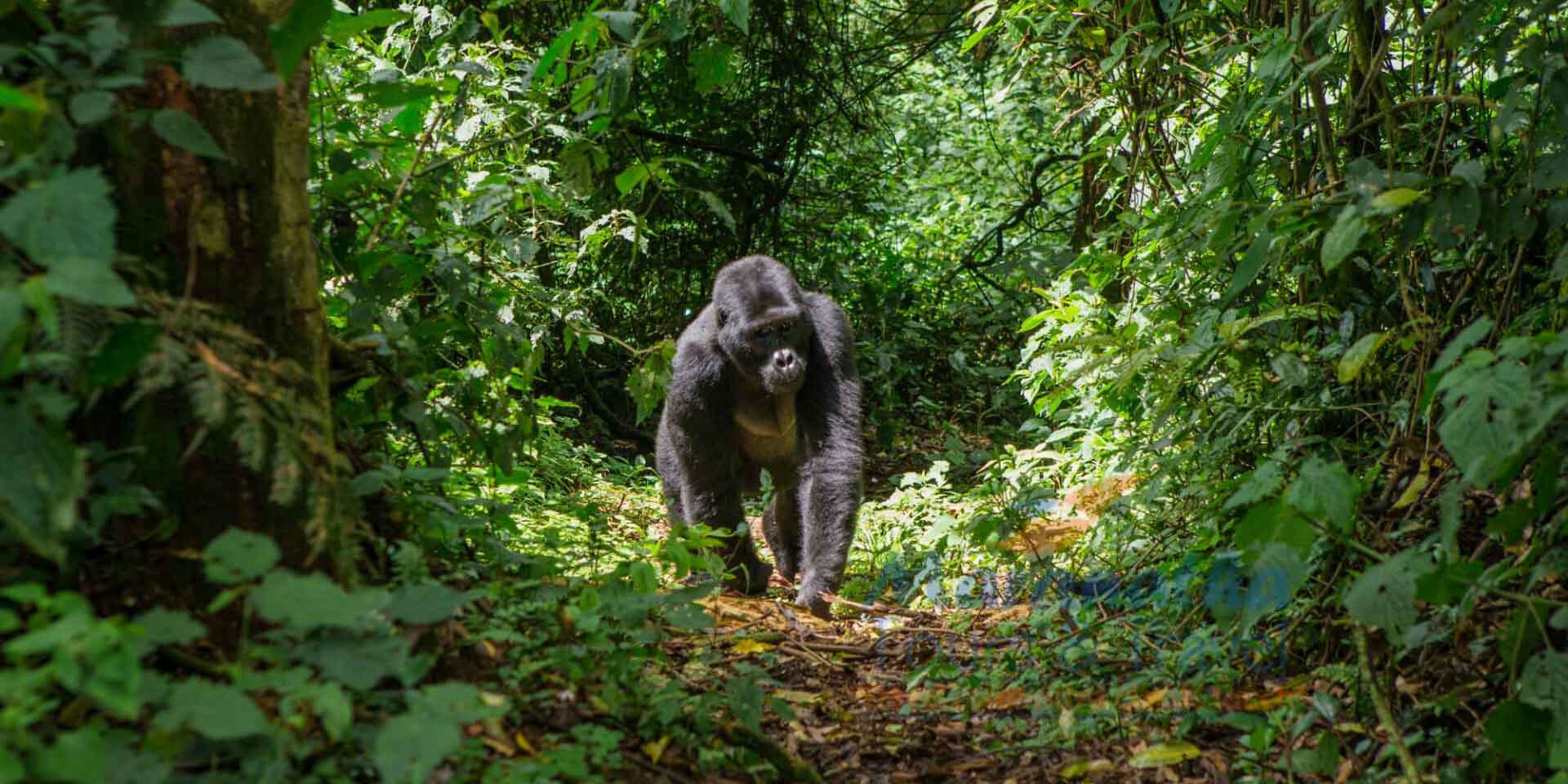Wildlife in Bwindi National Park
The numerous wildlife species in Bwindi Impenetrable National Park is one of the main reasons why Uganda is a popular safari destination in Africa and beyond. Bwindi Impenetrable National Park is a 331-square kilometers forest National Park nestled within the brim of the Albertine Rift Valley in south-western Uganda and one of Africa’s most popular tourist destinations because of rich biodiversity.
The outstanding wildlife is one of the contributors to Bwindi Impenetrable National Park’s species diversity justifying the reason it was designated a UNESCO World Heritage Site in 1994 (just three years after being gazetted into a National Park). When you mention wildlife in Bwindi Impenetrable National Park, one would think of the endangered Mountain gorillas but the Park is home to over 120 species of mammals, over 350 species of birds, over 27 species of Amphibians, about 200 species of butterflies, several reptiles and about 170 species of trees.

Gorilla Trekking in Bwindi Impenetrable National Park
Mountain Gorillas totaling to more than the World’s population are the main wildlife in Bwindi Impenetrable National Park. There are over 20 habituated groups of these apes and with a gorilla permit, any eligible person can be able to see them in Bwindi Impenetrable National Park.
Other interesting wildlife in Bwindi Impenetrable National Park are olive baboons, chimpanzees, black and white colobus monkeys, L’Hoests Monkeys, yellow-backed duikers, Vervet monkeys, red-tailed monkeys, giant forest hogs, clawless otters, African elephants, side-striped jackals, African civets, African golden cats, bush pigs, black-fronted duikers, and blue monkeys among others.
Birds also make up a significant diversity of wildlife in Bwindi Impenetrable National Park with over 350 species found in the forest National Park. Of the 350 species of birds, over 23 species are Albertine Rift endemics while 25 species are restricted to the forest range and 4 species considered threatened species. Commonest species are Chapin’s flycatcher, African green broadbill, Shelley’s Crimsonwing, short-tailed warblers, white-bellied robin chat, and many others.
When it comes to reptiles, about 9 of the 14 snake species are endemic to Bwindi while the western Rift Leaf folding frog and Ahl’s Reed frog are some of the commonest Amphibians in Bwindi Impenetrable National Park.
Best time for viewing the Wildlife of Bwindi Impenetrable National Park
Wildlife in Bwindi Impenetrable National Park can be viewed all year round but the dry months-January, February, June, July, August, September, and December are preferred for gorilla trekking and nature walks because the rains (in the months of March, April, October, and November) make hiking trails and forest floors muddy and slippery. It is for this reason that dry months are preferred for gorilla trekking and wildlife viewing/nature walks. The wet months, however, are ideal for viewing birds since it’s their breeding season.
